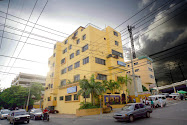Estimates for the allocation of total hospital resources
attributable to each orthopaedic operation performed at HAH are approximately
$1500USD per operation. This includes
administrative expense, generator fuel, facility maintenance etc. (indirect
costs) As volume of operations increases
the per case indirect costs decrease. However, direct
costs, which make up a relatively minor portion of total costs remain
relatively constant. These are expenses
like dressings, medications, and additional anesthesiologist expenses relating
to any given case. Our subsidy formula seeks
to cover the direct costs of each
operation which are approximately $300US for an average case. At the end of the year we know that this
will come nowhere near the amount of income needed to economically sustain the
hospital. The hope is that the volunteer
program will enhance the reputation of the hospital, attract paying clientele,
and encourage donations of materials and supplies and with a good business plan
the hospital can become financially viable.
Volunteers should understand that the hospital may charge some of the
patients receiving operations. Donated
supplies are brought to help offset hospital expenses and our spirit of charity
must be intended to help build capacity of the institution and medical
community and not only to give free operations to patients.
The indigent patient subsidies will be given with some
criteria for the hospital to be accountable and also have a social work
department in the business office to assess the economic needs of the patients
and give discounts accordingly. All too
often simple pricing schemes in Haiti are used to target upper or middle class
paying patients and poor people are turned away. On the other hand if token prices are given
and potential income is not collected then donors are subsidizing care for
wealthy patients who could easily afford to pay. In addition resentment is created in the
medical community when wealthy patients are given discount services as this
undermines the income sources for other surgeons in the city.
Subsidies for Indigent
Care
Where will this money come from?
·
Indigent patient endowment fund which has the
potential to produce approximately $15,000 per year based on a principle of
$300,000. This will be largely used to
fund a portion of Dr. Alexis’ salary for the portion of his work attributable
no nonpaying patients
·
Volunteers – Surgical teams will be encouraged
to donate sufficient funds to subsidize the operations they are
performing. Operating 20 patients who
pay nothing would require $6000 of subsidy, which would be the suggested
donation for a typical volunteer team.
Sometimes more or less patients will be operated, sometimes patients may
be able to pay part or all of their direct costs. Although accounting will be kept, and
year-end balances will be reviewed, these subsidies will be suggested tax-deductible donations.
·
Patients themselves – even if a patient can pay
$10 this will be collected and decrease the reliance on donor subsidy while
also creating responsibility and commitment on the part of the patients.
Business Plan

 No plan is perfect and in this environment where there is a
large difference in affordability of services it is difficult to create an
equitable system that serves the richest and the poorest as well as all of
those in between. The general concept
will be what I call the “American Airlines Model”. That is where all passengers arrive safely at
their destination at the same time, but if you want a wider seat, warmed nuts,
a washcloth and hot meal then you may be willing to pay 3x more for your
ticket. Even in economy class people may
pay different amounts for equivalent seats.
At HAH we will not discriminate but if patients are willing to pay for premium
rooms then let’s maximize our opportunity and provide first class service. If they want the cheapest economy rate then
let’s give them a timely and safe operation – and maybe we can add a free
orange juice and bag of peanuts.
No plan is perfect and in this environment where there is a
large difference in affordability of services it is difficult to create an
equitable system that serves the richest and the poorest as well as all of
those in between. The general concept
will be what I call the “American Airlines Model”. That is where all passengers arrive safely at
their destination at the same time, but if you want a wider seat, warmed nuts,
a washcloth and hot meal then you may be willing to pay 3x more for your
ticket. Even in economy class people may
pay different amounts for equivalent seats.
At HAH we will not discriminate but if patients are willing to pay for premium
rooms then let’s maximize our opportunity and provide first class service. If they want the cheapest economy rate then
let’s give them a timely and safe operation – and maybe we can add a free
orange juice and bag of peanuts.































